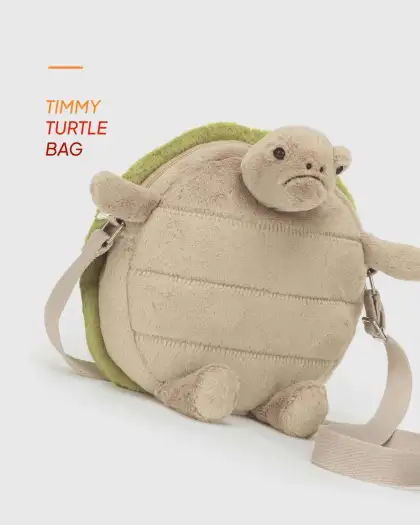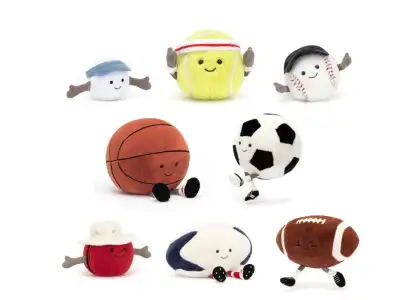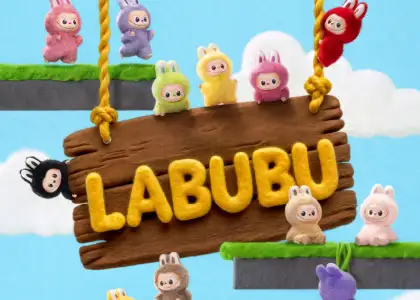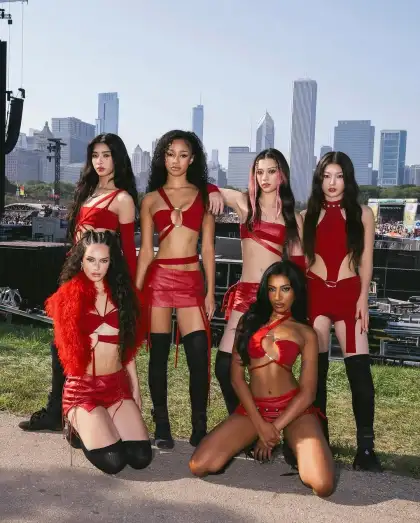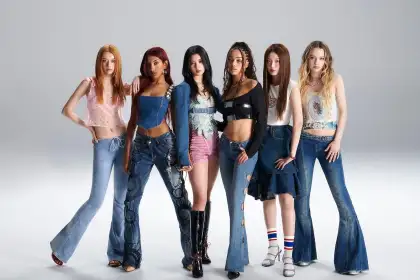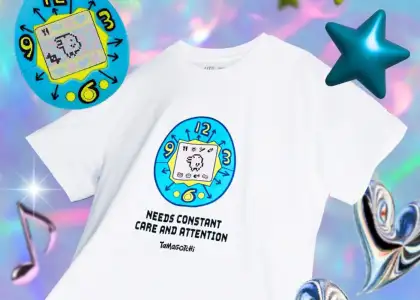How ‘Inside Out 2’ Expounds on the Complexities of Our Emotions

Whether you’re a Disney/Pixar fan or not, you must’ve heard of “Inside Out.”
The 2015 Pixar Animation Studios feature follows the story of Riley and the inner workings of her mind where Joy, Sadness, and other emotions administer her thoughts and actions. The film received rave reviews from critics and viewers (a staggering 98% rating on Rotten Tomatoes!) for its wholesome and innovative portrayal of the inner workings of the human mind and how our emotions play into our everyday choices.
It’s no surprise that the film has been greenlit for a sequel, (because duh, we need more stories to tell us how feelings work!) and after nearly a decade, “Inside Out 2” hit theatres in May and was (unsurprisingly) an instant box-office hit! Not only did it have a record-breaking opening weekend, earning an estimated $295 million worldwide, but it also became the highest-grossing animated film of all time, overtaking its cousin from the Walt Disney Animation Studios, “Frozen II.” Fun fact: Inside Out 2 has earned over US$1.46 billion at box offices globally.
With Riley growing into a teenager, her world expands, which triggers new emotions to pop up and quite literally, bulldoze their way into headquarters. We are introduced to new — complicated — emotions like Envy, Ennui, Embarrassment, and the effervescent star of the film, Anxiety.
Critics found it a worthy sequel; one that’s not only entertaining, but will potentially “spark interesting conversations among viewers” who have had similar experiences.
That being said, the Pixar franchise is not only the most successful but also one of the most relatable movies ever made. Why? Well, the answer is simple but we’re going to ride this wave a little longer and tell you a few reasons why “Inside Out 2” is a highly relevant film for all ages, and how it impressively encapsulates in a one hour and thirty-six-minute runtime the complexities of being a person who, more often than not, gets overwhelmed by their emotions.
On understanding how our mind works
If you haven’t watched the film, here’s the gist. Our girl Riley is thirteen and with it comes puberty, which brings in a whole lot of changes that turn her mental headquarters into a chaotic mess. Riley’s cornerstone emotions: Joy, Sadness, Anger, Fear, and Disgust, are suddenly bombarded with a sudden demolition at headquarters to make room for — yes, you guessed it, new Emotions!
As Riley joins a Hockey training camp, it introduces her to new and exciting possibilities… but also to new worries about what these future possibilities might bring, which is fueled by the emotion, Anxiety. Throughout the film, we see her sense of self tested amidst these changes, as well as how Joy, Sadness, and the other cornerstone Emotions handle and understand what Riley is currently going through.
Now that we’ve laid that down, how exactly did the movie portray the complexities of emotions?
In the first film, we are introduced to “Core Memories” and how these shining glass orbs power Riley’s personality islands, which are the core of who she is as a person.
These islands experience some turbulence in the second film as Anxiety enters the fray and provides new Core Memories that are implanted in her “Belief System” — a dark blue environment with translucent, shimmering strings that intertwine to form Riley’s core self.

Producer Mark Neilsen shared on the Pixar Animations Studios website, “We met with experts. We read a lot of books and spoke with psychologists about what happens to the teenage brain — the expansion of their minds at that time. It became clear pretty quickly that there would be a lot of potential for entertainment with a new group of Emotions coming in and disrupting the core five that have just hit their stride in figuring out how to work together.”
"Inside Out 2" showcased a narrative about growing up and provided imaginative and creative visual representations of how emotions react to outside forces, and how they also sometimes counteract other existing emotions.
We talked with Jeric Fugen, a clinical psychologist from Empath, about the film’s educational aspect.
“While it's a simplified version of how emotions work, it captures the essence of how our different feelings interact and influence our behavior,” he said. “The characters representing different emotions provide a visual and narrative way for audiences to understand that emotions are not just isolated feelings but part of a complex system that shapes our thoughts and actions.”
Joy and Anxiety were often seen butting heads in the film, and how they, along with the other emotions, often argued about the choices Riley should make; whether it should be based on her existing sense of self or her newfound beliefs.
“One scene that really stood out to me is when Riley experiences a mix of emotions simultaneously, showing that our feelings are often intertwined. This scene effectively shows that emotions are not always simple and can be complex and even contradictory at times,” Jeric added. “This is in line with my work as a therapist, where understanding the interplay of different emotions is key to helping people manage their experiences."
“Inside Out 2” beautifully shows us that as we grow older, our worlds get bigger, and with it comes new experiences to sort through and feelings to sort out. But the film also teaches viewers that being a mess is part of growing up.
As Joy said in the film, “I know new emotions can seem unhelpful at first, but I’ve learned that every emotion is a good emotion.”
On simplifying complex emotional dynamics
How many times have you heard people say, “It’s complicated” or “It’s not you, it’s me.” In movies, we would often come across this at emotionally heightened scenes, when a character has reached a realization or is about to make an important decision that will ultimately change the course of their lives.
Change is the keyword here, and with it comes a feeling that titters between excitement and nervousness.
But what is Anxiety, truly? Let’s leave it to the experts. Jeric explained, “I would describe anxiety as ‘anticipation.’ Anxiety often revolves around anticipating future events or outcomes, usually leading to a sense of fear, panic, or dread. This anticipation can be frustrating and overwhelming, as it causes us to focus on what might go wrong, rather than what is actually happening in the present moment.”
That definition totally made sense as in the film, Anxiety came across as an exciting, positive emotion at first glance. That is until she brought up the possible negative outcomes of the choices Riley would make. This was reflected in some of her dialogues, like how she said, “We need new friends or we're going to be totally alone in high school,” or in the way she sarcastically lamented, “That’s not going to haunt us for the rest of our lives at all.”

Anxiety was also seen hoarding the control board, the console which influences Riley to decide and act. Throughout the film, we saw Anxiety encouraging Riley to make new “cooler” friends which meant leaving her old friends behind. She also almost destroyed Riley’s honesty when she broke into their coach’s office to peek at the record notebook after being worried about the outcome of her performance at camp.
This Emotion’s overpowering quality was vividly highlighted here. As for why Anxiety can feel so overpowering, Jeric elucidated, “Anxiety can feel overpowering because it taps into our survival instincts. It’s a natural response to perceived threats, but in modern life, these ‘threats’ are often not immediate dangers but rather stressors like work, relationships, or personal expectations."
Riley became more and more worn out as the film progressed, tossing and turning at night and overworking herself in training. This reminded us of how Anxiety first introduced herself at headquarters, carrying a ton of baggage while brightly saying, “Oh my gosh! I’m Anxiety! Where can I put my stuff?”
“Inside Out 2” comically pertains to the psychological burden of our emotions and how they can weigh us down and occupy more space than we have room for in a given day.
On the other hand, we also witnessed the other Emotions’ more complicated sides, such as how Joy’s optimistic attitude led to some instances of “delusion” as reflected through her blind optimism to make things better.
Envy’s starry-eyed persona and desire to fit in and be admired may seem harmless at first until it became a constant cue for Riley to compare herself with others, which only fueled Anxiety even more.

“Anxiety becomes powerful because it can hijack our other emotions, leading to a cycle of fear and worry that influences how we feel, think, and act,” Jeric added.
However, as with most Pixar films, it ends on a happy note as the Emotions accept each other, and eventually learn to work together. Joy’s emotional statement to Anxiety still makes us teary-eyed to this day. We just loved it when she said, “You don’t get to choose who Riley is. Anxiety, you need to let her go.”
This showed that as all our emotions are connected, they also evolve over time.
Promoting mental and emotional disorder awareness
With so many emotions in the room, it’s easy to be overwhelmed. And that is exactly what happened to Riley. After days of losing sleep over worrying so much and training more than she could physically handle, she eventually breaks down.
According to the World Health Organization, Anxiety disorder is the most common of all mental disorders, with an estimated 4% of the global population currently experiencing it.
In the film, Riley experiences an Anxiety attack in the middle of a hockey game, which was caused by her mind going into overdrive as Anxiety glitches at the control board, unable to let go.
Jeric shared his thoughts on this particular scene, praising it for its accurate portrayal, “The overwhelming sense of panic, the inability to focus, and the feeling of losing control are all common experiences during an anxiety attack. While it’s a simplified depiction, it accurately captures the intensity and suddenness with which anxiety can strike, particularly in high-pressure situations.”
Riley was able to calm down eventually with deep breathing exercises and with the help of her friends who immediately came to her side upon seeing her breakdown. This scene was not only moving but incredibly insightful, as it encouraged people to be more aware of the effects of this emotion.

If you are someone with an anxiety disorder here are some exercises that can help, according to the psychologist.
“When experiencing an anxiety attack, grounding techniques can be very helpful. One simple exercise is the ‘5-4-3-2-1’ technique, which involves engaging your senses to bring your focus back to the present moment. You identify five things you can see, four things you can touch, three things you can hear, two things you can smell, and one thing you can taste. This exercise helps to redirect your mind away from the anxiety and towards the present," he explained.
“Another example is a simple breathing exercise, starting with deep, slow breathing to calm your body’s stress response. The 4-7-8 breathing technique involves inhaling quietly through the nose for four seconds, holding the breath for seven seconds, and exhaling slowly through the mouth for eight seconds to promote relaxation and reduce anxiety.”
As with any type of disorder, prevention is key. Jeric noted that preventing breakdowns involves recognizing the early signs and taking proactive steps to manage it before it gets worse.
Apart from getting adequate sleep and getting regular physical activity, an effective way to manage anxiety daily is through consistent mindfulness practice.
“Even just five minutes of mindfulness meditation each day can help train your mind to stay present and reduce the constant worrying that triggers anxiety,” he said. “It’s a simple practice but can make a significant difference over time.”
On that note, we’ll end it here with a quote from Joy: “You can't just bottle us up!” Emotions are meant to be felt, not denied. Connecting with your emotions throughout your life such as prioritizing the small things that bring you joy or even letting yourself feel sad at times is essential in maintaining a sound mind and body. Don’t keep things inside out of embarrassment, fear, or worry.

ICYDK, an “Inside Out” spinoff TV series coming to Disney+ in 2025, so get excited to see more of our favorite Emotions! The first concept art for “Dream Productions” was recently unveiled at the D23 Expo last August. You can check out this recap here.
Follow Empath to learn more about their community-curated mental healthcare services and start your path towards mental wellness today.
And catch all the latest Pixar Animated Studio features by following along on their Facebook and Instagram pages.
Get the latest curated content with The Beat Asia's newsletters. Sign up now for a weekly dose of the best stories, events, and deals delivered straight to your inbox. Don't miss out! Click here to subscribe.




